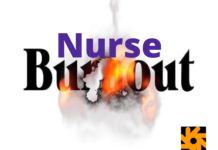To Buy Phenergan Online Visit Our Pharmacy ↓

Overview of Phenergan Side Effects
Phenergan, commonly prescribed for nausea and motion sickness, comes with a range of side effects that users should be aware of. These side effects can vary in severity and duration depending on individual tolerance levels and dosage amounts. It's crucial for patients to understand the potential risks associated with taking Phenergan to make informed decisions about their health and well-being.
Here is a table summarizing the Top 5 Side Effects of Phenergan that users should be mindful of:
| Side Effect | Description |
|---|---|
| Drowsiness and Sedation Effects | Phenergan can cause significant drowsiness and sedation, impairing a person's ability to operate machinery or drive safely. |
| Potential Allergic Reactions | Some individuals may experience allergic reactions to Phenergan, ranging from mild rashes to severe anaphylaxis. |
| Risk of Respiratory Depression | Phenergan usage has been linked to respiratory depression, especially in those with respiratory conditions or at higher doses. |
| GI Side Effects and Constipation | Phenergan can lead to gastrointestinal disturbances such as constipation, nausea, and stomach upset in some patients. |
| Long-term Risks and Precautions | Long-term use of Phenergan may pose risks such as dependency, tolerance, and other potential adverse effects requiring careful monitoring. |
Drowsiness and Sedation Effects

Drowsiness and sedation are common side effects associated with Phenergan use. Many individuals taking this medication may experience feelings of drowsiness, leading to fatigue and decreased alertness throughout the day. This can be particularly concerning for those who operate heavy machinery or need to drive long distances. Sedation effects can also impact cognitive function, making it challenging to focus on tasks that require mental acuity. It is important to be cautious when taking Phenergan to mitigate these effects and ensure safety in daily activities.
Potential Allergic Reactions
Potential allergic reactions to Phenergan can be severe and sometimes life-threatening. It's crucial to be vigilant for any signs of an allergic response when using this medication. Symptoms may include rash, itching, swelling, dizziness, and difficulty breathing. In severe cases, anaphylaxis can occur, leading to a sudden drop in blood pressure and loss of consciousness. If you experience any of these symptoms after taking Phenergan, seek medical attention stat to prevent further complications and ensure proper treatment. Always inform your healthcare provider about any known allergies or adverse reactions to medications to avoid the risk of a potentially dangerous situation.
Risk of Respiratory Depression

Phenergan use comes with the risk of respiratory depression, a serious side effect that can be life-threatening if not managed properly. This condition occurs when the central nervous system is suppressed, leading to slow or shallow breathing. It is crucial for individuals taking Phenergan to be aware of the symptoms of respiratory depression, such as difficulty breathing, slow heart rate, and confusion. Immediate medical attention is necessary if these symptoms occur to prevent any complications. Patients should always follow the prescribed dosage and avoid using Phenergan alongside other medications that can further depress the respiratory system. Being informed about this potential risk can help ensure the safe use of Phenergan and minimize the chances of experiencing respiratory depression.
Gi Side Effects and Constipation
Gastrointestinal (GI) side effects are common with Phenergan use and can include nausea, vomiting, and abdominal discomfort. These issues can be bothersome for some users but are usually mild and temporary. It's important to stay hydrated and follow a balanced diet to help alleviate these symptoms. Additionally, constipation is a known side effect of Phenergan, which can be managed with increased fiber intake, staying active, and possibly using over-the-counter stool softeners. If GI side effects or constipation persist or worsen, it's advised to consult a healthcare professional for further guidance and potential adjustments to medication.
| Common GI Side Effects | Management Tips |
|---|---|
| Nausea, vomiting, abdominal discomfort | Stay hydrated, balanced diet |
| Constipation | Increase fiber intake, stay active, consider stool softeners |
Long-term Risks and Precautions
Long-term use of Phenergan may present some risks that need to be considered to ensure proper management of the medication. Patients who rely on Phenergan for an extended period should be aware of the potential for developing tolerance, where the body becomes accustomed to the drug's effects, leading to the need for higher doses to achieve the same results. This can increase the risk of experiencing adverse reactions or side effects associated with elevated dosages. Long-term use may also raise concerns about dependency and addiction, particularly for individuals with a history of substance abuse or addictive behaviors. It is important for healthcare providers to closely monitor patients using Phenergan chronically to detect any signs of dependency and provide appropriate support or interventions.
To mitigate the risks associated with prolonged Phenergan use, healthcare professionals should consider alternative treatment options or adjustments to the dosage regimen. Long-term users should be advised on the importance of strictly adhering to the prescribed dosage and schedule to minimize the likelihood of developing tolerance or dependency. Periodic medication reviews and reassessments can help identify any emerging issues and ensure that the benefits of Phenergan continue to outweigh the risks. Patients should also be educated on the potential long-term implications of Phenergan use and encouraged to report any concerning symptoms or changes in their condition promptly. By fostering open communication and proactive monitoring, healthcare providers can help mitigate the risks associated with extended Phenergan use and promote safe and effective treatment outcomes.






























